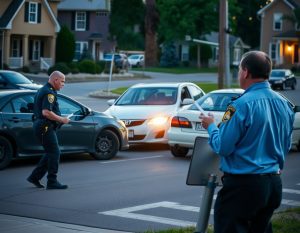During 2016, Illinois roadways were the site of 324,473 motor vehicle crashes. Of these, 8,053 involved pedestrians (including pedalcyclists—a category that includes occupants of non-motorized bicycles, unicycles, and tricycles). That means that around 2.5% of all automobile crashes in Illinois involved a pedestrian.
But, understandably, pedestrians account for a disproportionate number of injuries and deaths caused by car crashes. After all, pedestrians don’t have the solid metal frame of an automobile to come between them and another vehicle in a crash.
In fact, of the 66,703 injury crashes in Illinois in 2016, 7,616 (or about 11.5%) involved pedestrians. And pedestrians also accounted for a whopping 16% of fatal crashes in the state that year.
Looked at differently, only 20.6% of Illinois car crashes involved an injury of any kind, and only 0.3% involved a fatality. But when you focus in on pedestrian accidents, 95% involved an injury, and 2% involved a death.
In short, pedestrians are among the most vulnerable users of Illinois roads. But their lack of physical protection while traveling doesn’t mean that they lack legal protection following an accident. Here are three points about the law that every Illinois pedestrian should know:
- A pedestrian can sue for injuries sustained in a car accident
- A pedestrian can be found at fault for causing a car accident
- If a pedestrian carries auto insurance, that insurance provides coverage in the event of a hit-and-run or accident involving an uninsured driver
Personal Injury Lawsuits by Pedestrians
A pedestrian injured in a car crash can pursue a personal-injury claim against the driver that injured him. If a pedestrian dies, his or her family may be able to pursue a wrongful-death action in Illinois or a survival claim.
Those types of lawsuits each come with a time limit called a statute of limitations. After that time limit expires, the injured person or his or her family will not be allowed to sue, even if the other party’s liability is obvious. In Illinois, the following statutes of limitations apply:
- Personal injury claim: Two years after the cause of action accrues.
- Survival claim: Two years after the cause of action accrues.
- Wrongful death claim: Two years after the date of death.
Read more: Statutes of Limitations for Personal Injury Claims in Illinois
Pedestrians’ Fault
Although it may seem like only a driver could be at fault in causing an accident involving a pedestrian, that is not true. Keep in mind that pedestrians, too, have to follow the rules of the road, although their duties are somewhat different than those drivers must abide by.
For example, a person crossing the street at night outside of a crosswalk wearing all dark clothes could be found partially (or entirely) at fault if he or she is struck by a motor vehicle. That could result in a reduction in what he or she can recover through a lawsuit or an inability to recover anything at all.
Hit-and-Run/Uninsured Drivers
Most auto accident lawsuits involve an auto insurer. After all, Illinois requires that every driver in the state carry at least a certain minimum amount of insurance. But not every driver in Illinois follows that requirement. And, even if a driver does follow that requirement, if he or she flees from the scene of the accident, so that his or her identity cannot be determined, who can the pedestrian hold responsible then?
The answer is that the pedestrian’s own auto insurance provides uninsured and underinsured motorist coverage for just such a scenario. So, if a pedestrian is involved in an accident with an uninsured driver, an unknown driver, or a driver whose own insurance doesn’t cover all of the pedestrian’s damages, he or she can look to his or her own policy for further recovery.
Conclusion
Pedestrians are among the most vulnerable users of Illinois roads. If you’ve been involved in an automobile accident while on foot or riding a bicycle, you have rights. Contact the lawyers of Costa Ivone at our new Chicago office for a free consultation to learn how the law protects you.



